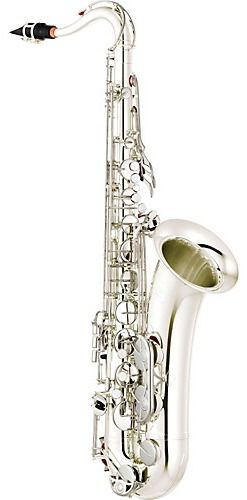by Christopher Bacas
 In the fall of 1970, I brought a Bundy tenor saxophone home from school. I was nine and in Mrs Farrar’s 5th grade class. To celebrate, my father slid an LP called “Soultrane”out of a blue and white cardboard jacket. The first sounds from the record player’s single speaker: a muscular folk song with rippling connective tissue that quickly spun free into endless cascades. Dad explained that it was my new horn, in the hands of John Coltrane. I didn’t know his name and nothing that day seemed possible, anyway.
In the fall of 1970, I brought a Bundy tenor saxophone home from school. I was nine and in Mrs Farrar’s 5th grade class. To celebrate, my father slid an LP called “Soultrane”out of a blue and white cardboard jacket. The first sounds from the record player’s single speaker: a muscular folk song with rippling connective tissue that quickly spun free into endless cascades. Dad explained that it was my new horn, in the hands of John Coltrane. I didn’t know his name and nothing that day seemed possible, anyway.
In the weeks before lessons began, I played. The mouthpiece looked better with the reed on top, tickling my upper lip, so it stayed that way. With the “Breeze Easy Method” book, I figured out the names and fingerings of most notes. I sounded out some songs. Certain combinations sounded good-a,c,d,e,g, adding d# and g# for seasoning. That became “my scale”.
In the first lesson, Holmes Royer, a man as elegant as his name, saw my set up and heard the squawks, he reached over and rotated my mouthpiece.
“Try this” he said, chuckling.
My pattern was set for life. I’d teach myself in marathon sessions and show up over-prepared but lacking some key skill; intonation, correct rhythms, steady tempo. My teachers must have chuckled often. Or cringed.
A new kid in my class, Byron Bashem (I wish I could have made up this name) invited me to his place after school. Nobody was home, of course. The huge stove in their kitchen had a double set of burners. Between them, a flat surface big enough for a pound of sliced bacon. We gorged on fried baloney sandwiches from that griddle (his folks were from Richmond, VA). After, Byron played me a new record. The band and title sounded tough and ominous, “Black Sabbath-Paranoid”. On its’ gatefold black cover, phantom warriors, their movements rendered in glowing whorls. The music combined smeary guitars with precise drums and throbbing bass. It stayed in my head. Soon, I had 3.99$ to buy my own. I learned melodies and guitar leads on my new horn. Young Bashem and I began duetting, using a drum set bought by his traveling salesman father. When his family moved to a smaller house, we kept developing. My “scale” got a lot of use in our totally improvised duos. Once, on the way to Byron’s new place, a big guy stopped me.
“What’s in that case?”
“A saxophone”
“You play it?”
“Yeah”
“Lemme see it”
“I can’t”
“You better lemme see it”
I opened the case, presto.
“Play something”
“Not here”
“Play something, now!”
“Like what?”
“Mission Impossible. Get that.”
Luckily, I knew it.
He popped his fingers while I played the bassline, then got bored and walked away.
Knowing some music could save your ass.
I bought my first jazz record. I’d exhausted the Coltrane in my dad’s collection and found one I hadn’t seen before, a saxophone and drums duet called “Interstellar Space”. The sticker on the LP, ” His Final Recordings”, seemed sad (and history would prove, incorrect, as well). The music hovered in a massive chamber. There were bells, close to my ears. In the vastness, monsoon snare and cymbals with a saxophone. The saxophone sound was unbearably sweet. Its recitations reminded me of my uncle George chanting the Orthodox liturgy. I started playing in the bathroom as often as possible, but filed “Space” away. John Coltrane remained a mountain on the horizon, towering, inscrutable and unattainable.
I was enthusiastic about everything else, though. I tried any instrument in every home we visited. No piano was safe, no matter how decrepit. At Rinnie and Dick Staber’s farmhouse, I discovered a room where Dick, a mandolinist, kept a pile of boogered string instruments: cracked dobros, an autoharp with missing felt stoppers, a tightly strung scalloped-fret guitar and couple of his old axes. I “tuned” them, twisting stripped pegs until my wrists ached, strummed drones and sang formless parlando songs. When there weren’t instruments in a house, I went to the stereo and put on whatever records looked interesting. I didn’t desert my station(s) until food was served or my folks went out to the car.
My parents’ friends started giving me books about music: “They All Played Ragtime”, C.O Simpkins’ Coltrane book and Bill Cole’s Miles Davis biography. They brought records: “Chu Berry and his Stompy Stevedores” and a worn-out “Kind of Blue” that skipped across Miles’ tenderest solos like a Balkan dance band.
Starview, a tiny suburban sub-division, broadcast AOR at 92.7 FM. I had a 4 band radio on my dresser with a headless coat hanger jammed into the antennae slot. With care, I could steer the dial between the surrounding Muzak and static.
Part 1
